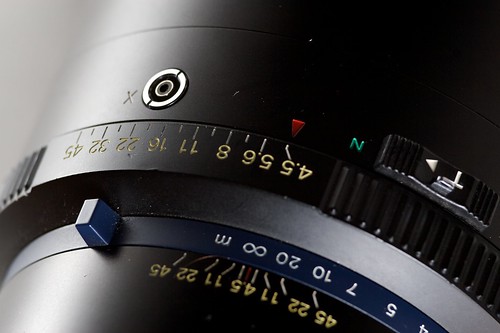While I love my Zeiss Ikon Nettar and Yashica D cameras, recently I've been wishing for a more versatile medium format camera. Specifically, I wanted the following things:
- The ability to use focal lengths besides "normal" (the Nettar is 75mm, the Yashica 80mm).
- SLR viewing and close up ability for portraits and food photography (the Nettar is focus guessing, the Yashica has a real focusing, but neither focuses close).
- A versatile medium format "travel kit" (both my current cameras are actually good travel cameras).
- 6x6 or larger. I know 6x4.5 is a good percentage larger than 35mm, but honestly, I'd rather not bother carrying a medium format camera for just 6x4.5.
In the medium format world, though, having both #2 and #3 is tricky; the more versatile SLRs are the larger/heavier cameras, which tend to be the ones you don't want to travel with. With that in mind, and with the many options available in MF, I decided I needed to make a list of candidates, and try and rent as many as I could to make an informed comparison and choice. It's possible to read forever about how some people can handhold a certain camera, or carry it around all day, and others would never do that; what matters is whether you can or want to do it, and for that, you need personal experience.
Without further ado, the candidates:
- Mamiya RZ67. Widely known as an excellent "studio/tripod" camera, with good close focus ability on every lens because of the built in bellows. The rotating back also makes it possible to reasonably shoot 6x7 while using a waist-level viewfinder. Very popular landscape, portrait, product, food camera, which is why it made my list. The downsides are the size and weight.
- Hasselblad 500 series/Bronica SQ series. These 6x6 SLRs are smaller and lighter than the RZ67, but lack the close focus ability except on a few lenses (or by adding extension tubes/close up filters). The two systems have been compared a lot, mainly because the Bronica is much cheaper used. In terms of rental, however, none of the shops in my city rent the Bronica, and so the Hasselblad will be the representative 6x6 SLR in my comparison.
- Mamiya 7/Mamiya 6. These rangefinder systems (7 = 6x7, 6 = 6x6) offer fewer lenses than the SLR systems, with better wide-angles, but fewer telephoto options (150mm is the longest). The huge advantage is that with no mirror assembly, they're much smaller and lighter, making them excellent travel cameras. In terms of portrait/food cameras, however, these will be vastly inferior to the SLRs. Again, none of the shops in my city rent the 6 (it's an older camera), and so the 7 will be the representative interchangeable lens rangefinder.
- Fuji GW/GSW 670/690. These are fixed lens rangefinders, with either a 90mm (GW) or 65mm (GSW) lens, and a 6x7 (670) or 6x9 (format). These have the same advantages and disadvantages as the Mamiya rangefinders, but are cheaper, and can have a larger negative with the 6x9 option. I plan to try the GSW690, as despite being a fixed lens camera, it's not a normal length lens.
From the above choices, an optimal system could be the RZ67 for food, portrait, and some landscape work, plus a rangefinder (Mamiya 6, 7, or Fuji GSW690) as a travel camera. A compromise system would be a 6x6 SLR with a few lenses, that could function well for studio-style work, but be light enough to travel with (probably with only 2 lenses).
In the following weeks, I'll be renting the list above, and posting about my experiences with each system, followed by a conclusion when I decide what's right for me. Hopefully this can help other people who are making the same sort of decision that I am.
Here are the posts so far:


No comments:
Post a Comment